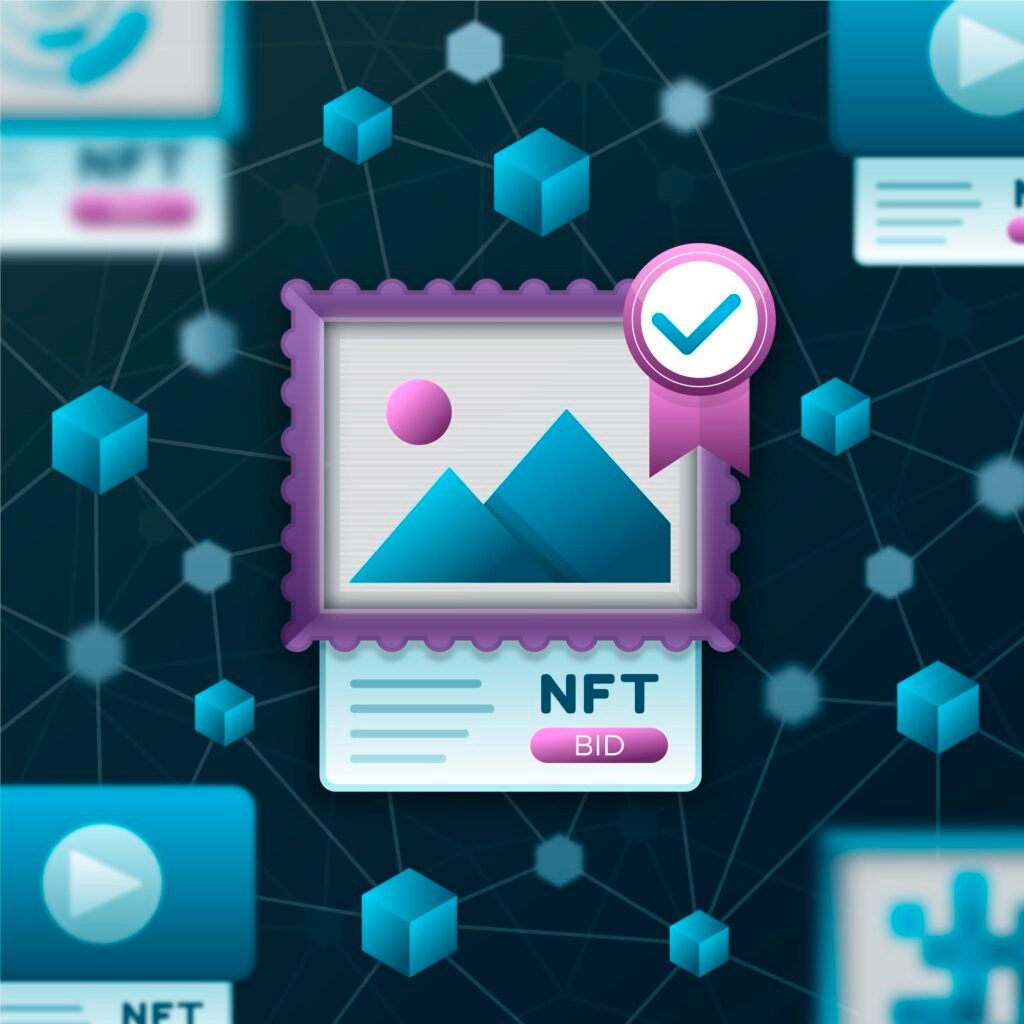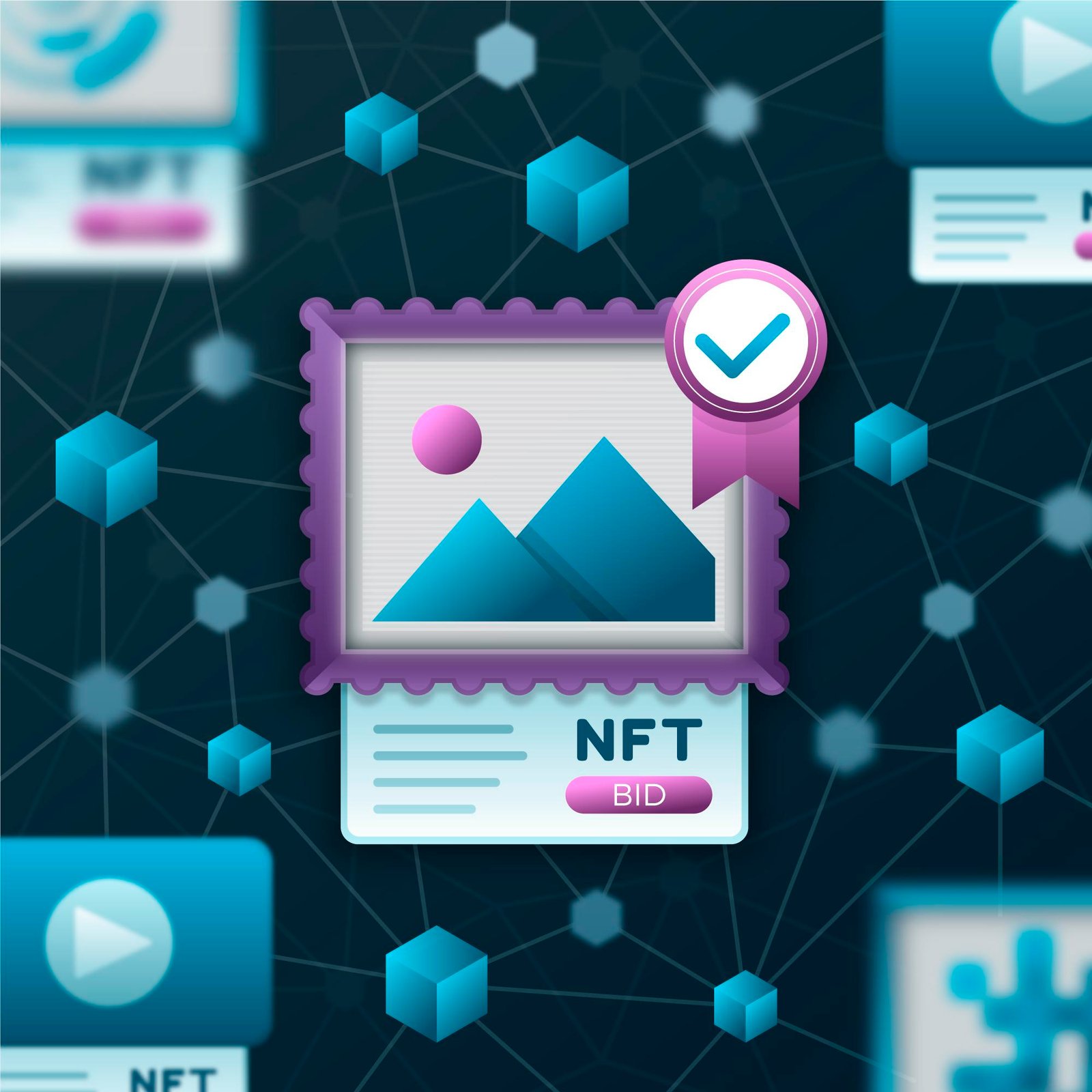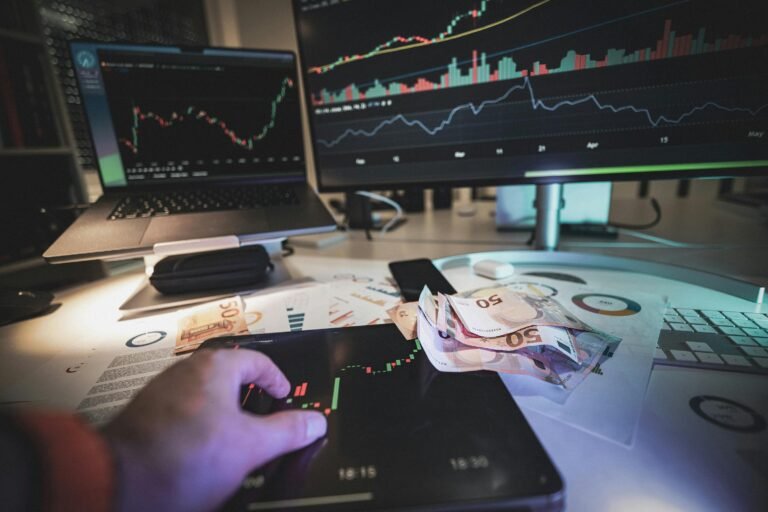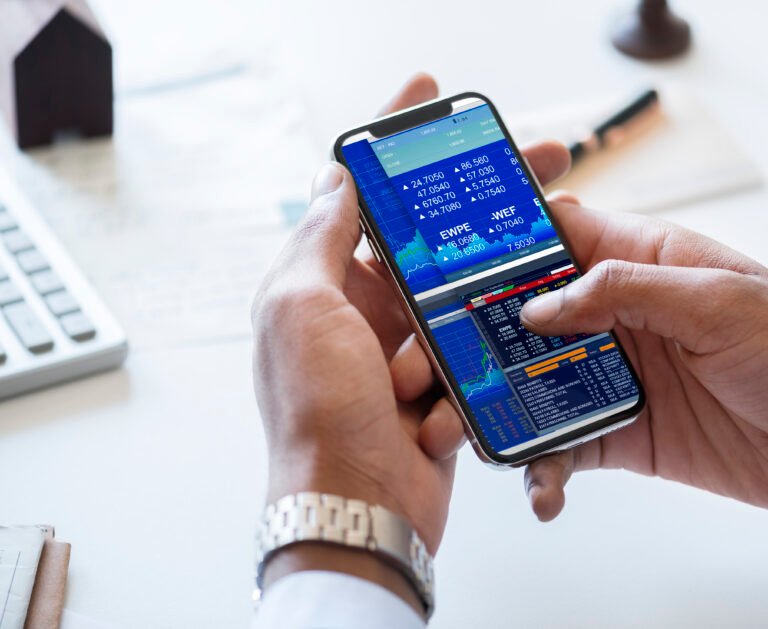NFTs in 2025: Trends, Market Stats & Top Collections
What Are NFTs (Non-Fungible Tokens)?
NFTs, or Non-Fungible Tokens, are unique digital assets stored on a blockchain. Unlike cryptocurrencies like Bitcoin or Ethereum (which are fungible and interchangeable), NFTs represent ownership of a one-of-a-kind asset—whether that’s digital art, music, videos, in-game items, or even real-world assets like real estate.

Table of Contents
Each NFT is:
- Indivisible: You can’t split it like a Bitcoin.
- Verifiably scarce: The blockchain confirms authenticity and ownership.
- Immutable: Ownership history and metadata can’t be altered.
NFTs use smart contracts—primarily on Ethereum and other NFT-compatible chains like Solana, Polygon, and Arbitrum—to facilitate creation (minting), transfers, and interactions with marketplaces and platforms.
At their core, NFTs redefine digital ownership, turning creators, collectors, and brands into direct participants in a programmable, peer-to-peer economy.
Why NFTs Still Matter in 2025
The hype cycle around NFTs may have cooled from the 2021 frenzy, but in 2025, NFTs have matured into a functional asset class—one that powers real-world utility across industries like:
- Gaming: NFTs serve as in-game items, avatars, and digital land.
- Finance (NFT-Fi): NFTs are now collateral for loans and fractionalized ownership.
- Art & Culture: Digital artists continue to thrive through global exposure and royalty-enforcing smart contracts.
- Branding & Identity: Major brands use NFTs for loyalty programs, ticketing, and exclusive experiences.
- Real Assets: Property deeds, event tickets, certifications, and legal documents are tokenized as NFTs.
The NFT space in 2025 is less about speculative JPEGs and more about interoperable, programmable assets that offer ownership, access, and value in both digital and physical spaces.
In short: NFTs didn’t die—they evolved.
2. NFT Market Overview in 2025
2.1 Growth and Volume Trends
As of 2025, the NFT market has rebounded and stabilized following earlier boom-and-bust cycles. While speculative mania has declined, more sustainable growth is being driven by:
- Utility-focused projects
- Brand integrations
- Gaming and real-world tokenization
Key 2025 Stats (Estimated):
- Total NFT Market Cap: Over $60 billion
- Top Blockchains for NFTs: Ethereum, Solana, Polygon, Arbitrum
- Monthly Trading Volume: Consistently ranges between $1.2–$2.5 billion
- Active Wallets: Over 5 million interacting with NFT platforms monthly
- Fractional NFTs & DeFi-NFT protocols: Account for nearly 18% of volume
2.2 Shifts in Market Sentiment
In 2025, NFT sentiment has shifted from pure speculation to utility and identity. Key changes in market behavior include:
✅ From Hype to Holding
- Collectors now focus on long-term value and community
- Emphasis on project transparency, utility, and real-world use cases
✅ Community > Art Style
- Strong communities and consistent engagement matter more than celebrity hype
- NFT holders value governance rights, early access, and brand utility
✅ Institutional and Brand Adoption
- Big players like Nike, Amazon, and Netflix now operate NFT-based platforms
- Tokenized loyalty, membership programs, and digital collectibles are booming
In short, 2025’s NFT market is more mature, data-driven, and ecosystem-integrated than ever before.
3. Top NFT Trends to Watch in 2025
The NFT space in 2025 is no longer just about digital art or collectibles. It’s evolving fast with new technologies, financial models, and real-world applications. Here are the most important trends reshaping NFTs this year:
3.1 AI-Generated and Dynamic NFTs
NFTs are becoming smarter and more interactive:
- AI-generated art adapts over time or in response to data inputs
- Dynamic NFTs change based on user behavior, in-game progress, or market activity
- Artists use generative models to create evolving and personalized NFT experiences
Example: An NFT that changes its image or stats based on the holder’s wallet activity or real-world events.
3.2 NFT Gaming and Metaverse Integration
NFTs are deeply integrated into the Web3 gaming and metaverse economies:
- NFTs represent game characters, assets, skins, weapons, land, and more
- Own-to-Earn and Rent-to-Play models allow players to monetize assets
- Interoperable NFTs are usable across multiple games and metaverses
Example: Own a sword NFT usable in two different blockchain games built on Arbitrum and Solana.
3.3 NFT-Fi (NFT + DeFi)
NFTs are becoming financial instruments, not just collectibles:
- NFT Lending Platforms: Borrow stablecoins by locking up blue-chip NFTs
- Fractional Ownership: Own a piece of high-value NFTs like CryptoPunks
- NFT Rentals: Temporary access to NFTs for games, events, or virtual spaces
- Staking NFTs to earn yield or rewards
Projects like NFTfi, Arcade, and BendDAO are leading this fusion of NFTs and DeFi.
3.4 Real-World Assets as NFTs (RWAs)
Tokenization is bridging the digital and physical worlds:
- Real estate, luxury watches, event tickets, and certificates are minted as NFTs
- Ownership, provenance, and transfer are recorded immutably on-chain
- Legal contracts and compliance are increasingly integrated via smart contracts
Example: Buying a physical apartment in Dubai using a tokenized deed as an NFT.
3.5 Brand Adoption and Celebrity Collections
Brands and creators are using NFTs for access, loyalty, and identity:
- Major Brands: Starbucks, Adidas, and Amazon use NFTs for memberships and rewards
- Celebrities & Artists: Use NFTs for direct-to-fan engagement, royalties, and merchandise
- Event Access: Concerts, meetups, and virtual experiences tied to NFT ownership
Example: Holding a Nike NFT unlocks access to limited sneaker drops and IRL events.
4. Top NFT Collections in 2025
The NFT landscape in 2025 features a mix of blue-chip legacy projects, rising stars, and ecosystem-specific collections. Success is no longer just about hype—it’s about community, real-world value, and long-term vision.
4.1 Blue-Chip Collections Still Dominating
Some NFT projects from the early boom continue to thrive due to strong branding, community, and ongoing utility.
🔹 Bored Ape Yacht Club (BAYC)
- Continues to lead with exclusive IRL events, merch drops, and metaverse integration
- Maintains high floor prices and celebrity interest
🔹 CryptoPunks
- As one of the first NFT projects, it retains historical value
- Increasingly used as a digital identity and profile picture (PFP) in Web3
🔹 Pudgy Penguins
- Huge community-driven growth
- Strong retail adoption with toys and licensing deals
🔹 Azuki
- Anime-inspired NFTs with strong branding, storytelling, and utility in fashion/gaming
4.2 Rising Stars and New Entrants
Newer projects in 2024–2025 are gaining attention by solving real problems or offering new utilities.
🔸 Parallel
- Sci-fi trading card game NFTs, backed by a deep gameplay loop and active user base
🔸 Redacted Remilio Babies
- Spin-off from Milady, embracing meme culture and DeFi integration
🔸 Rug Radio Genesis
- Content-driven NFT ecosystem, allowing holders to participate in decentralized media
🔸 Ether (ETHR)
- High-end art meets utility, combining PFP with fashion collabs
4.3 Chain-Based Standouts
NFT dominance is no longer exclusive to Ethereum. Other chains are thriving with their own ecosystems.
✅ Solana NFTs
- Mad Lads, SMB Gen 2, and Tensorians driving high volume
- Low gas fees and vibrant DeFi-NFT crossover
✅ Polygon NFTs
- Popular with brands (Nike, Reddit, Starbucks)
- Mass adoption through loyalty and collectible programs
✅ Arbitrum & Layer-2 Ecosystems
- Hosting innovative, cheaper-to-mint NFT games and tools
- Home to emerging DeFi-NFT hybrid protocols
5. NFT Stats & Analytics You Should Know
Understanding the NFT market in 2025 means looking beyond hype and digging into the key data points that define real value. Here’s what every collector, investor, and builder should be tracking:
5.1 Floor Price Trends
- Blue-Chip NFTs like BAYC and CryptoPunks continue to command high floors ($40K–$150K+ range)
- Mid-tier collections show stronger volatility but faster ROI potential
- Fractional NFTs and dynamic NFTs are gaining traction, offering entry to high-value assets
Tip: Use sites like NFT Price Floor or [OpenSea] for real-time tracking.
5.2 Trading Volume & Liquidity
- Average daily NFT trading volume in 2025: $65M–$110M
- Top marketplaces: Blur, OpenSea, Magic Eden, Tensor (Solana)
- Newcomers like Mintify and Frame are gaining attention for pro trading tools
Blur dominates volume but caters more to traders; OpenSea still leads in casual users.
5.3 Active Wallets & Unique Holders
- Over 5 million monthly active wallets interacting with NFT contracts
- On average, top NFT projects have 40–60% unique ownership—a key trust metric
- Wallet analytics platforms like Nansen, Dune, and Zapper help track holder behavior
Look for high unique holder % = stronger community, less risk of pump-and-dump.
5.4 Utility Metrics
- Staking Participation: NFTs used in DeFi, yield farming, or governance (e.g. NFTX, JPEG’d)
- Rental Activity: Games and metaverse plots see 15–30% of NFTs rented monthly
- On-Chain Royalties: Creator revenue continues despite royalty wars; smart contracts now enforce them dynamically
Utility > Hype in 2025. Always ask: What can this NFT do?
6. Challenges and Risks in the 2025 NFT Market
While NFTs have matured significantly by 2025, the space is still far from risk-free. As adoption grows, so do scams, legal ambiguity, and technical issues. Here are the top concerns every user and investor should understand:
6.1 Wash Trading & Market Manipulation
- Some platforms still struggle with fake volume generated by wash traders
- Blur farming and airdrops incentivize non-organic activity
- Inflated stats can mislead newcomers and damage long-term trust
Tip: Use data platforms like Nansen or Dune with filtering options to spot true organic trading.
6.2 Project Abandonment & Oversaturation
- Thousands of NFT projects launched during bull cycles have rugged or gone inactive
- Copycat and low-effort collections flood marketplaces, making discovery difficult
- Only NFTs with clear utility, community, or brand vision are surviving
Always ask: Who is building this? What’s their roadmap beyond mint day?
6.3 Smart Contract Bugs & Exploits
- Vulnerabilities in minting or staking contracts can lead to asset loss
- Reentrancy attacks, approvals exploits, and drainers remain common
- Even established platforms have suffered multimillion-dollar losses
Use trusted wallets like Ledger, revoke unused permissions, and mint from audited contracts.
6.4 Legal & Regulatory Uncertainty
- Governments worldwide are still unclear about:
- Whether NFTs are securities
- How to tax NFT trades and royalties
- If NFT marketplaces need to enforce KYC/AML laws
Some regions (EU, US, Singapore) are introducing clearer frameworks, but much is still gray.
6.5 User Errors & Security Gaps
- Many users still lose assets due to:
- Clicking phishing links
- Signing malicious wallet prompts
- Failing to secure seed phrases
Education and secure wallet practices are essential as the space expands.
Read Also: DeFi & NFTs: How They Work Together in the Web3 Economy







